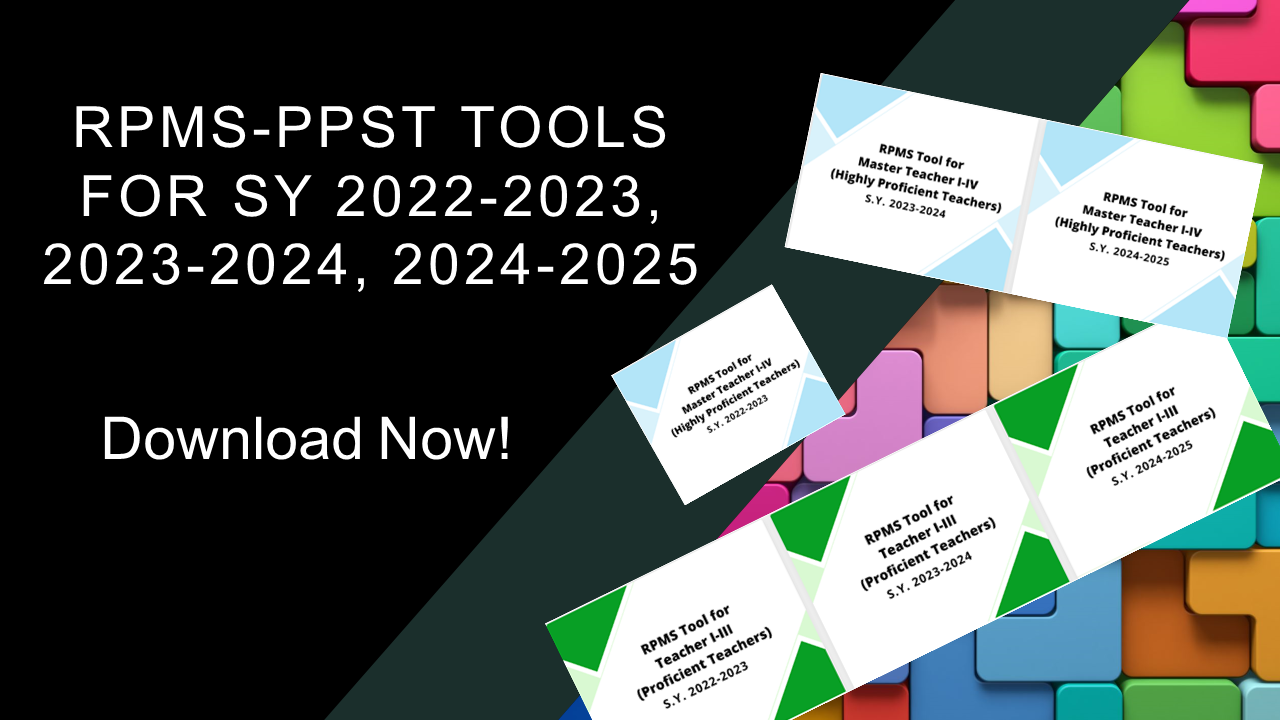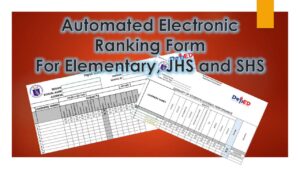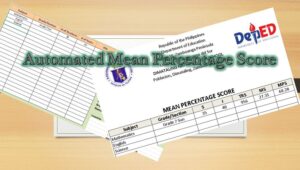Table of Contents
- The performance cycle of teachers follows the DepEd RPMS Cycle prescribed in Deped Order (DO) No. 2, s. 2015 (Guidelines on the establishment and Implementation of the Results-Based Performance Management System (RPMS) in the Department of Education). Figure 1 illustrates the four (4) phases of the RPMS Cycle and its alignment with the RPMS-related activities of teachers within a School Year (SY).

2. This guidelines shall cover three (3) SYs: SY 2022-2023, SY 2023-2024, SY 2024-2025. Each SY shall follow the prescribed RPMS timeline provided below (Figure 2).


3. The performance rating of teachers shall follow the schedule provided in the School Calendar and Activities guidelines of each SY. It shall be used as basis for performance-based compensation and benefits (i.e. Mid-Year and Year-End bonuses, Productivity Enhancement incentive), determination of length of service for purposes of computation for the Performance-Based Bonus (PBB), and for purposes of career progression of teachers.
RPMS-PPST Indicators for Proficient and Highly Proficient Tools
4. Teachers who will use the Pro rent Tools are expected to be professionally independent in the application of skills vital to the teaching and learning They provide focused teaching programs that meet curriculum and assessment requirements and display skills in planning, implementing, and managing learning programs. They actively engage in collaborative learning with the professional community and other stakeholders for mutual growth and advancement. They are reflective practitioners who continually consolidate the knowledge, skills, and practices of Career Stage 2 (Proficient) Teachers.
5. The following teacher positions, including those of similar rank that teach under the ALS, Madrasah Education, SPED, and/or Special Science Education, shall use the Proficient Tools:
- Teacher I;
- Teacher II; and
- Teacher
The additional teacher positions that may be created by virtue of Executive Order (EO) No. 174 (Establishing the Expanded Career Progression System for Public School Teachers) shall likewise use the Proficient tools, unless otherwise stated in subsequent guidelines.
6. Master Teachers who will use the Highly Proficient tools are those that consistently display high levels of performance in their teaching They manifest an in-depth arid sophisticated understanding of the teaching and learning process, have high education-focused situation cognition, and are more adept in problem solving and optimize opportunities gained from experience. Career Stage 3 (Highly Proficient) Teachers work collaboratively with colleagues and provide them support and mentoring to enhance their learning and practice. They continually seek to develop their professional knowledge and practice by reflecting on their own needs, and those of their colleagues and students.
7. The following Master Teacher positions, including those of similar rank teaching under the ALS, Madrasah Education, SPED, and/or Special Science Education, shall use the Highly Proficient Tools:
- Master Teacher I;
- Master Teacher II;
- Master Teacher III; and
- Master Teacher
The additional Master Teacher position that may be created by virtue of EO No. 174 shall likewise use the Highly Proficient Tools, unless otherwise rescinded in subsequent guidelines.
8. These guidelines shall prescribe the specific set of indicators for each school year, all of which were based on consultation with selected field personnel, teachers, and master teachers nationwide. Thus, all school-based personnel covered by this DepEd Memorandum shall strictly abide by the set of indicators assigned for each SY. Any modification to the set of indicators per school year shall not be allowed.
9. The 37 PPST indicators for both Proficient and Highly Proficient Tools shall be divided across three (3) school years, each with a total of 15 indicators composed of Classroom Observable Indicators (COIs), Non-Classroom Obsevable Indicators (NCOIs), and the Plus Factor.
10. Figure 3 provides for the 3-year distribution of the 37 PPST indicators using the Proficient tools.

11. Figure 4 provides for the 3-year distribution of the 37 PPST indicators using the Highly Proficient Tools.

12. The weight per each indicator shall be as follows:

13. All COIs shall be measured using the following Performance Indicators: Quality and Efficiency.
- Quality shall be measured through the demonstration of COIs during the Classroom Observation (CO) and the submission of the Classroom Observation Tool (COT) or Inter-Observer Agreement Form, whichever is applicable, as means of verification (MOV).
- Efficiency shall be measured through efficient delivery of the lesson objectives within the prescribed period or time allotment.
There shall be no Timeliness performance indicators for all COIs.
14. On the other hand, NCOIs shall be measured using the following Performance
Indicators: Quality, Efficiency, and/or Timeliness.
Multi-Year RPMS-PPST Tools
15. The following RPMS-PPST Tools shall be used in SY 2022-2023, SY 2023- 2024, and SY 2024-2025:
a. Annex A1: Proficient RPMS-PPST Tools for SY 2022-2023;
b. Annex A2: Proficient RPMS-PPST Tools for SY 2023-2024;
c. Annex A3: Proficient RPMS-PPST Tools for SY 2024-2025;
d. Annex B1: Highly Proficient RPMS-PPST Tools for SY 2022-2023;
e. Annex B2: Highly Proficient RPMS-PPST Tools for SY 2023-2024;
f. Annex B3: Highly Proficient RPMS-PPST Tools for SY 2024-2025;
g. Annex C: Full RPMS-Classroom Observation Tool Rubric
h. Annex D: Modes of Classroom Observation
i. Annex E: Classroom Observation Process
Guidelines for Classroom Observation
17. For SY 2022-2023, only two (2) classroom observations are required, which shall be conducted in the last two (2) quarters (one per quarter). For SY 2023- 2024 and SY 2024-2025, four (4) classroom observations are required, which shall be conducted once every quarter.
18. Figure 5 provides for the schedule and distribution of the identified COIs that shall be observed across quarters for Proficient Teachers; while Figure 6 provides for the schedule and distribution of the identified COIs that shall be observed across quarters for Highly Proficient Teachers.








19. The average rating of the classroom observations done across quarters shall constitute the final rating for each COi.
20. Additional classroom observations may be conducted for purposes of technical assistance to teachers to improve their teaching practice. However, classroom observations conducted for technical assistance purposes will not be a factor in the determination of a Ratee’s performance rating. The purpose or objective of the observation shall be clearly stated prior to any scheduled classroom observation.
21. All classroom observations for performance evaluation purposes shall be scheduled in advance. The Ratee must be informed of the schedule at least three (3) working days before the classroom observation.
22. In case ofunforseen circumstances and fortuitous events that are outside the control of the schools (such as natural or man-made calamities or disasters, lockdowns, etc.), concerned schools may be allowed to deviate from the prescribed timeline of conducting classroom observations; provided that requests in relation thereto shall be subject for approval of the Schools Division Superintendent; provided further, that all applicable classroom observation modes are exhausted prior to submitting the request.
23. The default mode of classroom observation shall be in-person/face-toface observation. In case of any national pronouncements that may affect the operations of the school (e.g. community quarantines, implementation of blended learning, etc.), the following modes of alternative classroom observation may be considered:
a. Online Synchornous Classroom Observation
b. Online Asynchronous Classroom Observation
c. Classroom Observation via Learning Action Cells (LAC)
The usual protocols and procedures indicated in the 2019 DepEd RPMS Manual for Teacher and School Heads shall apply. Annex D provides for the additional guidelines on the conduct of all classroom observation modes.
24. To further guide the Ratees and Raters on the conduct of the various classroom observation modes, Annex E provides for the pre-observation, observation, and post-observation processes for any mode of classroom observation.
Ratee, Rater, and Approving Authority in the RPMS
25. The matrix reflecting the appropriate raters and approving authorities is enclosed and established in DO 2, s. 2015 (RPMS Guidelines). To address operational concerns that have surfaced since the issuance of DO 2, s. 2015, the said matrix shall be expanded in the table below to provide for a clearer ratee-rater-approving authority relationship.

RPMS-PPST Tools for Downloads
Reference: Deped Memorandum No. 008 series of 2023





